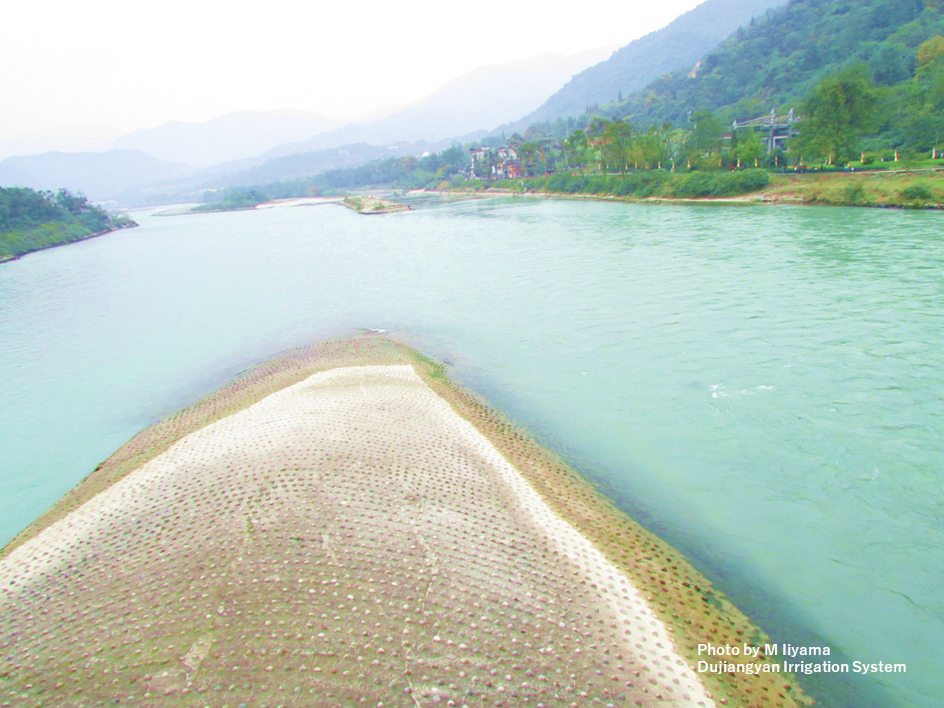Pick Up
878. World Food Day 2023 ~Water is life, water is food. Leave no one is left behind.~

878. World Food Day 2023 ~Water is life, water is food. Leave no one is left behind.~
Today, October 16, we commemorate the United Nations World Food Day, with the focus theme for 2023 on the central role of water. We address the pressing global challenges related to water, a fundamental element critical to food production and sustainability.
Under the resonant theme Water is life, water is food. Leave no one behind., this year's commemoration serves as a clarion call to underscore the critical importance of water as an indispensable resource that ensures the accessibility and sustainability of food for all.
The World Food Day 2023 website provides a comprehensive overview of the profound importance of this occasion.
Water is a cornerstone of life on our planet, making up 50% of the human body and covering over 70% of the Earth's surface. Yet despite its abundance, freshwater, the preferred source for drinking, agriculture, and most industrial processes, accounts for only 2.5% of the world's total water.
At the same time, per capita freshwater resources have declined by 20% in recent decades. This decline is due to years of inadequate management of agricultural water use, excessive groundwater extraction, and degradation of water quality due to industrial expansion and the effects of climate change.
In the face of these challenges, the world is called upon to establish a fair and equitable distribution of limited water resources, coupled with an imperative for more efficient water management within agricultural production. Our collective responsibility is to promote sustainable practices that harmonize with the finite nature of our water resources and ensure a fed and thriving global population.
The three major water-related issues from the perspective of agriculture and food are as follows:
① Water quantity = Water use management in agriculture
② Water quality = Water pollution from pesticide and chemical fertilizer residues
③ Water scarcity = Shortage of drinking and domestic water due to climate change
Water quantity = Water use management in agriculture
A significant portion of the world's fresh water, approximately 72%, is used for agricultural purposes, with an additional 5% used for food processing. The food production sector is a significant consumer of water resources, with the daily water consumption to produce food for a single person ranging from 2,000 to 5,000 liters.
In particular, irrigated agriculture relies heavily on groundwater, accounting for 59% in North America, 57% in South Asia, 35% in North Africa, and about 5% in Sub-Saharan Africa. This disparity highlights significant differences in water availability, accessibility, and pumping capacity that shape agricultural water use practices across regions.
In order to feed the world population of 8 billion people today, which is expected to reach 9 billion by 2050, the question is whether we can improve irrigation methods and facilities, promote the introduction of new technologies, and improve water use efficiency in order to reduce wasteful runoff and evaporation of agricultural water.
Water Quality = Water pollution from pesticide and chemical fertilizer residues
The adverse effects of agriculture on water quality come from the accumulation and runoff of residues derived from chemical pesticides and fertilizers. According to FAO statistics, an average of nearly 4 million tons of pesticides are used worldwide each year, primarily in China and the Americas.
While chemical pesticides and fertilizers have a significant impact on production, it is critical to determine their appropriate and excessive use to limit water pollution. Striking a balance between maintaining agricultural production and improving the water environment is paramount. Achieving this balance requires thorough research and analysis to identify effective trade-offs and innovative solutions. These measures will play a key role in fostering mutually beneficial relationships that benefit both local residents who rely on water and stakeholders involved in agricultural production.
Water scarcity = Shortage of drinking and domestic water due to climate change
In addition to declining water resources and degradation of water quality, the scarcity of water for drinking and general use is a critical global challenge. Today, approximately 2.4 billion people live in countries and regions where water is scarce. In addition, regions traditionally considered water-abundant, such as Central Africa, East Asia, and parts of South America, are experiencing seasonal water shortages due to erratic weather patterns caused by climate change. This evolving situation has transformed water scarcity from an occasional concern to an everyday reality in these areas.
Effective use of water resources, appropriate use of pesticides and chemical fertilizers, and efforts to mitigate climate change will themselves improve water availability, increase food production, and sustain agricultural livelihoods. To build a food system that leaves no one behind, now and in the future, we must collect, study and analyze information and implement policies that are data-driven and appropriate to the actual situation and context.
References
https://www.fao.org/world-food-day/en
https://www.unesco.org/en/articles/groundwater-making-invisible-visible
https://www.unwater.org/publications/un-world-water-development-report-…
https://www.fao.org/3/cc7340en/cc7340en.pdf
Contributors: Solongo TUMUR and IIYAMA Miyuki (Information Program)
